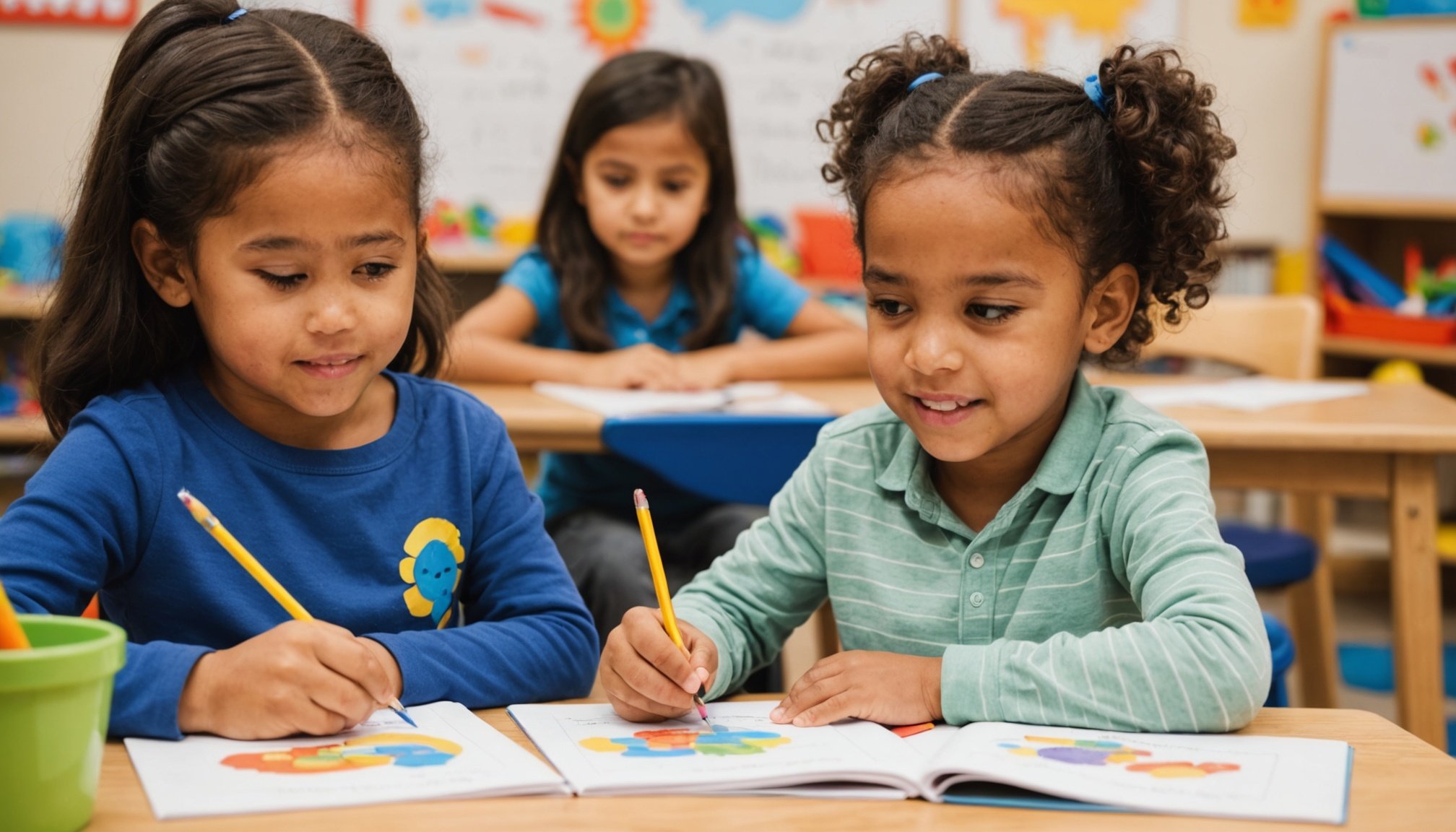Advantages of Bilingual Education
Bilingual education offers numerous benefits that extend beyond language acquisition, playing a crucial role in cognitive development during early childhood education. Research consistently demonstrates that bilingual individuals often exhibit enhanced cognitive skills, such as improved memory and processing abilities. This enhanced cognitive function is attributed to the brain’s constant workout in managing two languages, which aids in maintaining sharp mental abilities.
Cognitive Development and Critical Thinking
Cognitive development linked with bilingual education is profound. Bilingual individuals develop critical thinking and problem-solving skills more effectively than monolingual speakers. This is because managing two languages simultaneously requires the brain to distinguish between different linguistic structures and vocabulary, fostering an environment where problem-solving and analytical reasoning are continuously practiced.
This might interest you : Unlocking cardiovascular wellness: the transformative benefits of high-intensity interval training (hiit)
Enhanced Memory and Processing Abilities
Memory and information processing are significantly improved through bilingual education. Bilingual individuals often showcase strong working memory skills, allowing them to better handle complex tasks and manage multiple pieces of information. Early childhood is a particularly beneficial time for undergoing bilingual education, as the brain is highly receptive, facilitating robust development in these key areas of cognitive function. Hence, the advantages experienced in bilingual education extend beyond language skills, offering widespread mental benefits.
Research-Backed Cognitive Benefits
Bilingual education delivers significant cognitive benefits as supported by extensive research. In particular, studies in bilingualism research demonstrate profound impacts on the brain, marking it as a catalyst for positive changes in brain development. These findings propose that bilingual individuals often exhibit cognitive flexibility, attributing their enhanced capabilities to the educational outcomes fostered by managing two languages.
Have you seen this : Effective strategies for reducing anxiety in college students: your ultimate handbook to manage stress and find calm
Language Acquisition and Cognitive Flexibility
Research illuminates the relationship between language acquisition and cognitive flexibility. In bilingual children, adapting to multiple linguistic contexts encourages cognitive flexibility. This adaptation develops skills necessary for multitasking and better decision-making—essential when navigating complex environments.
Neuroplasticity and Brain Changes
Neuroplasticity, the brain’s way of reorganizing itself by forming new connections, plays a pivotal role in bilingual brain development. Studies reveal that the bilingual brain undergoes structural changes, enhancing areas involved in executive functions and memory. These shifts grant bilingual individuals the tools for superior problem-solving.
Long-term Academic Achievement
Bilingual education is strongly correlated with improved academic outcomes. Through a deeper mental workout from juggling two languages, bilingual students often achieve higher academically in the long run. Their enriched cognitive toolkit supports not only immediate academic success but sets a foundation for lifelong learning and adaptation.
Practical Strategies for Implementing Bilingual Education
Implementing effective bilingual education strategies involves deploying well-founded teaching methods and fostering parental involvement. One successful approach is the dual-language immersion model, where students are taught in both languages throughout the day. This method reinforces learning by providing constant exposure to both languages, enhancing cognitive development and proficiency.
Parental involvement plays a pivotal role in the efficacy of bilingual education. Parents can support by engaging in language learning at home, reinforcing what is taught at school. Schools can facilitate this by offering bilingual resources or workshops that help parents understand how to assist their children’s language learning journey.
Educators seeking to implement bilingual programs can benefit from a variety of tools and resources. Online platforms offering interactive language learning activities and bilingual books can enhance classroom learning. Moreover, employing culturally diverse materials not only aids language acquisition but also enriches students’ understanding of different cultures, promoting inclusivity.
Ultimately, integrating comprehensible strategies and resources, while encouraging active participation from parents, ensures a more holistic approach to bilingual education. These elements combine to deliver the robust educational outcomes linked with effective bilingual teaching, ultimately benefiting students’ long-term academic and cognitive growth.
Case Studies and Success Stories
The global landscape of bilingual education case studies is rich with insightful, impactful programs demonstrating success in various settings. Across continents, innovative bilingual programs thrive by tailoring education to diverse linguistic communities.
Innovative Bilingual Programs Worldwide
Examining these programs reveals tailored approaches that incorporate cultural nuances while enhancing cognitive and linguistic development. For instance, dual-language immersion models in countries like Canada and Spain have reported significant success in schools, where students exhibit stronger command over both languages and improved cognitive skills.
Success Stories from Educators
Educators share inspiring journeys showcasing how bilingual curricula transform student outcomes. Schools adopting adaptive methodologies report notable improvement in language proficiency and overall academic achievement. These educators often cite increased student engagement as a pivotal factor driving success, achieved through culturally relevant content and interactive teaching techniques.
Lessons Learned from Implementations
Despite successes, implementing bilingual education case studies brings challenges. However, schools learned to navigate these obstacles by emphasizing ongoing professional development and community involvement. Addressing issues such as resource allocation and building parent-teacher partnerships proved essential in overcoming hurdles. Through these educational narratives, we gain valuable insights into how adaptability and community engagement drive impactful bilingual programs.
Expert Opinions on Bilingual Education
In the domain of bilingual education, expert insights provide a nuanced understanding of its value and future prospects. Educational researchers underscore its transformative impact on young learners. Bilingual education enhances cognitive development, fostering skills that transcend language proficiency.
Leading researchers advocate for stronger policy frameworks to support bilingual education. According to educational research, early exposure is pivotal, potentially reshaping future education systems. This proactive approach aligns with policy recommendations that call for increased resource allocation and teacher training to foster effective implementation.
Experts further highlight a promising future for bilingual education. By leveraging insights from educational research, policymakers can craft strategies that uphold inclusive and multilingual learning environments. The overarching consensus is that such educational systems not only promote linguistic diversity but also drive enhanced educational outcomes.
For sustainable growth in bilingual education, experts stress the need for adaptable policies that reflect evolving societal language needs. Continuous bilingual education research ensures that such adaptations are informed and impactful. The pathway to realising these visions lies in collective efforts between educators, policymakers, and communities.
By championing these expert recommendations, bilingual education can significantly contribute to the broader educational landscape.

